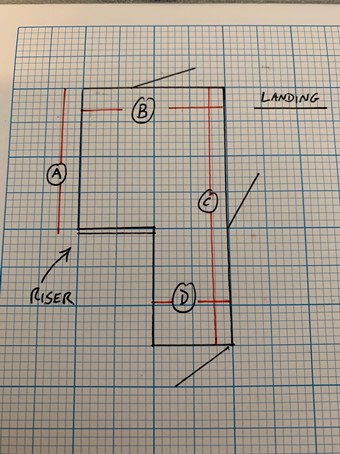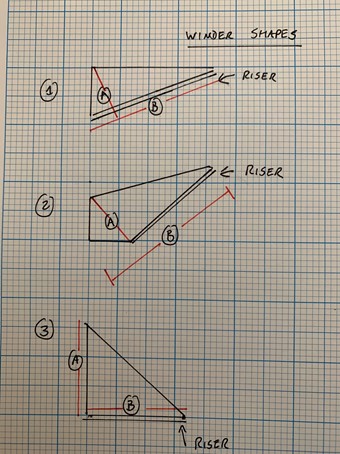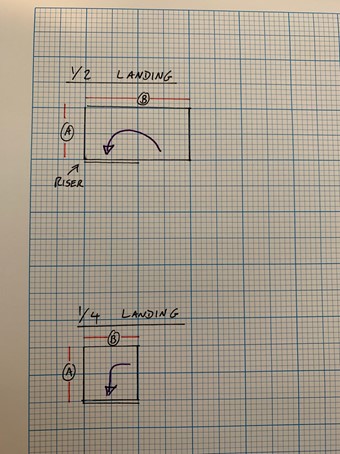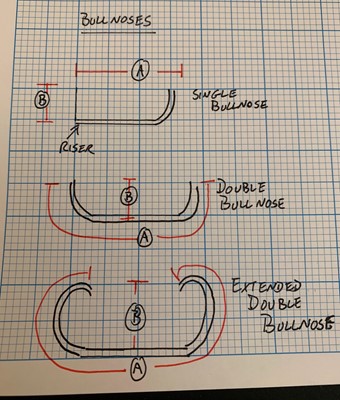How do I measure carpets for stairs?
December 5, 2020
We would always strongly recommend you to have your stairs measured by an experienced flooring professional, however, if there is no alternative, this guide should help you roughly calculate how much carpet you will need.
Firstly, it helps to know what carpet you are planning to install on your stairs.
All the details of the carpet are important in the planning stages, for example, you will need to know what widths it is available in. If there is a pattern, you will need to know how many times it repeats on the width and length to make sure it lines up correctly.#
Landings-
While not often too big, the landing needs particular attention when measuring to avoid having to seam carpet together later on if you have not allowed enough.
Measure the longest dimensions in width and length, making sure to measure over the riser
If the landing is a complicated shape, make sure you get all the measurements you can to make your plan more accurate and efficient. In the example below you would need all 4 measurements for an efficient plan.
Your measurement should include any recess for doorways too.

Winders- Called winders because they typically wind around 90 degrees ( in sets of 3 or 4) or 180 degrees ( in sets of 6 or 8).
There are 3 main shapes of winders. On the diagram below, please note the red lines indicating where to measure. You need to get the longest measurement on the width.
The measurement for the depth of each winder should include the riser as well as the tread to give the full measurement.
If you are dealing with a spiral staircase, it is likely that all of the steps will be winder’s and will need to be fitted individually.

Quarter landings and Half Landing’s-
Like winders these will be used to navigate the stairs around a corner.
In the examples below, the purple arrow indicates the direction of travel.
As with all stairs and landings, remember to measure over the riser.
You may find sometimes that 2 quarter landings are used instead of a half landing to navigate a 180 degree turn.

Straight Stairs- These are relatively simple to measure.
Measure the width and using a tape measure, measure from the top of the flight to the bottom making sure the tape measure remains in contact with the entire steps all the way down ( The tape measure should be bending over each step and NOT in a straight line)
You can measure one step and multiply by the amount of steps as an alternative but this won’t tell you if there are differences in the stairs measurement.
Likewise, it is not safe to assume that all the steps are the same width because this is rarely the case!
Bullnose- A lot of staircases will have a special step at the bottom called a bullnose.
They come in a variety of shapes and sizes.
These steps are different in the respect that you need to account for the riser measurement in both dimensions.
This is because the riser will curve round the step in either a smooth curve or an angle ( such as 45 or 90 degrees)
In the case of the single bullnose in the example below, measurement A will still need to have the riser measurement included or it will not fit correctly.

Planning- As with measuring the stairs, the planning can be tricky and we would advise consulting one of our experienced sales team to assist you with any planning requirements.
Info@selbycontractflooring.co.uk / 0207 739 5051
